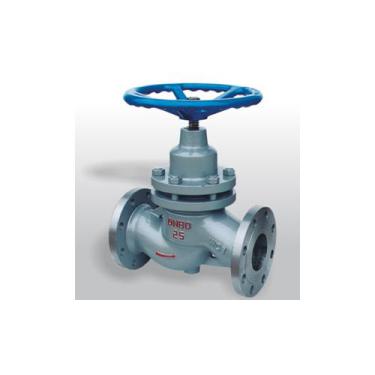
Modern industries such as industry, agriculture, chemical industry, scientific research, aerospace, and aerospace have developed rapidly under the influence of modern science and technology and the economy. Their development has also led to the development of related industries, such as the development of industry, making the improvement of valves. Go further. Plunger valves and globe valves have become the classic products of valves nowadays. What are the differences between plunger valves and globe valves?
The plunger valve is composed of a valve body, a valve cover, a valve stem, a plunger, a hole holder, a sealing ring, a hand wheel and the like. When the hand wheel rotates, the plunger is driven through the valve stem to reciprocate up and down in the middle of the hole frame to complete the valve. The opening and closing function. The opening and closing part of the stop valve is a plug-shaped valve flap, and the sealing surface is a plane or a cone surface, and the valve flap moves linearly along the centerline of the fluid.
The closing of the plunger valve consists of a stainless steel plunger, two upper and lower elastic sealing rings and a metal bulkhead. The sealing effect is achieved by the plunger and the sealing ring being tightly fitted. The plunger is inserted in two sealing rings and the sealing area is It is much larger than the ordinary cut-off valve; when the plunger valve is opened and closed, the plunger moves slowly in the sealing ring, the contact surface is almost not worn, and when the plunger is closed, the plunger is inserted into the lower sealing ring to cut off the flow channel; when the plunger is opened, the plunger is not detached from the lower seal. The circle, but still hidden in the upper seal, kept isolated from the outside world, will not leak.
The shutoff valve is a forced seal type valve, so when the valve is closed, pressure must be applied to the valve flap to force the seal surface not to leak. When the medium enters the valve from below the valve flap, the resistance to be overcome by the operating force is the friction between the stem and the packing and the thrust generated by the pressure of the medium. The force of the closing valve is greater than the force of the opening valve, so the valve stem The diameter should be large, otherwise there will be stem bending failure.
The cut-off valve has the following advantages: simple structure, convenient manufacture and maintenance, small working stroke and short opening and closing time. Good sealing, low friction between the sealing surfaces, long life. The disadvantages of the cut-off valve are as follows: high fluid resistance, greater force required to open and close. Not suitable for media with particles, high viscosity, and easy to coke. Poor adjustment performance. The advantages of the plunger valve are described above. Its biggest drawback is the slower opening and closing speed.
Through the above analysis, the difference between the plunger valve and the shut-off valve has been well understood. It is believed that with the aid of modern science and technology, these two types of products will definitely be more suitable for market demand, and perhaps at some point in the future, the boundaries of these differences will become smaller and smaller.
Handheld Inkjet Printer,Industrial Inkjet Printer,Industrial Handheld Tij Printer,Handheld Tij Printer
Guangzhou INCODE Marking Technology Co., Ltd. , https://www.codings.nl